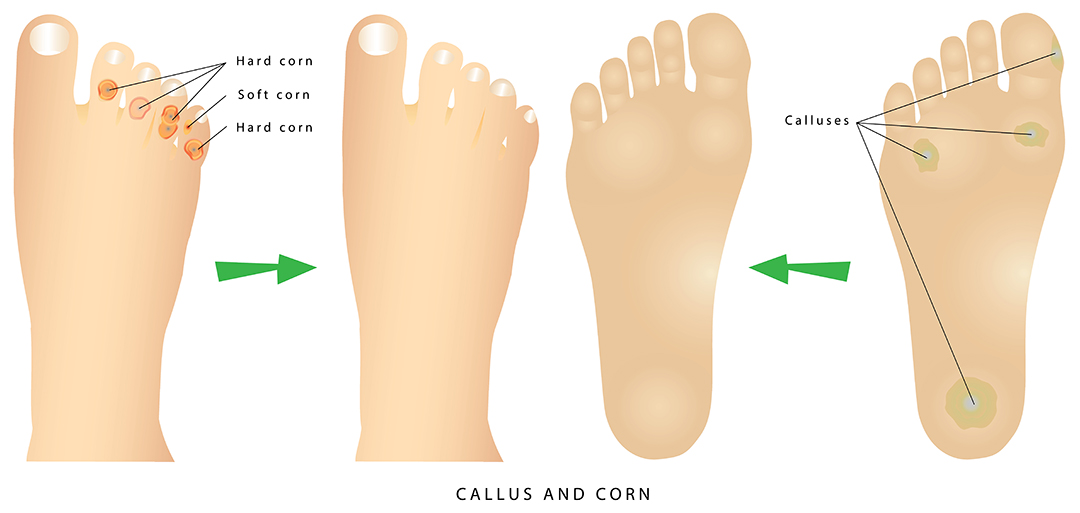Definitions, Differences, and Treatment Options
Most people have a general idea of what calluses and corns are when talking foot health. But the line between the two is often blurry in people’s minds. In this post, we’ll cover not just what corns and calluses are and how they differ from one another but, more importantly, how to treat them.
Corns and calluses can be generalized as a thickening of the skin in specific areas due to excess pressure and friction in that area. This is the body’s natural response, adding a protective layer where external pressures exceed the rest of the body’s average exposure.
Calluses and corns are typically found on the hands and feet. Think of a gardener wielding a shovel and other garden tools without gloves. Many professional athletes can experience callused hands due to the repeated motion of swinging a golf club, tennis racket, or baseball bat, for example.
On the feet however, corns and calluses are typically caused by friction or pressure due to ill-fitting shoes. Let’s take a look at the differences between the two.
CORNS
Corns can be soft or hard and are painful when pressure is applied to them. Generally, corns develop as a protective mechanism against friction and pressure due to poor biomechanics and ill-fitting footwear. They’re often found on the tops of toe joints, but can also be found on the sides and bottoms of feet.
A hard corn is thick, hardened skin that develops generally below the surface of the skin.
The cross-section of a corn is conical in shape and burrows in the subcutaneous tissue. It has a hard center and is surrounded by inflamed skin.
Soft corn is similar to a hard corn, but is usually found between the toes, and remains soft due to naturally-occurring moisture in that area.
CALLUSES
Calluses usually develop on the soles or sides of your feet. Most commonly the outside corner of your heels; the balls of your feet; sides of the big and baby toes.
Although they may look it, calluses are rarely painful. They vary in size and shape, and are often larger than corns.
Calluses develop as a protective mechanism against friction and pressure due to poor biomechanics, ill-fitting footwear, and changes in skin moisture.
ACTIVE ALIGNMENT TREATMENT OPTIONS
The following treatment options will provide relief corn and callus sufferers by addressing the issues that cause these conditions, namely friction from ill-fitting footwear.
- Custom Foot Orthotics
- Toe Separators
- Therapeutic Footwear
In addition, consider scheduling an appointment with our highly skilled Foot Care Nurse, Sharon Brophy, to manage and treat calluses, corns and thickened nails due to fixed/osseous positions.

